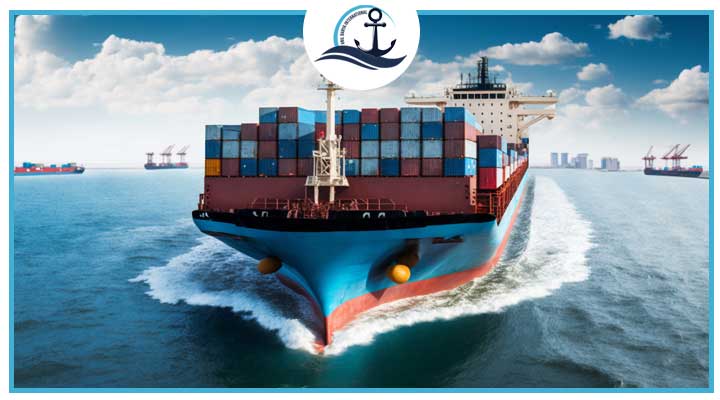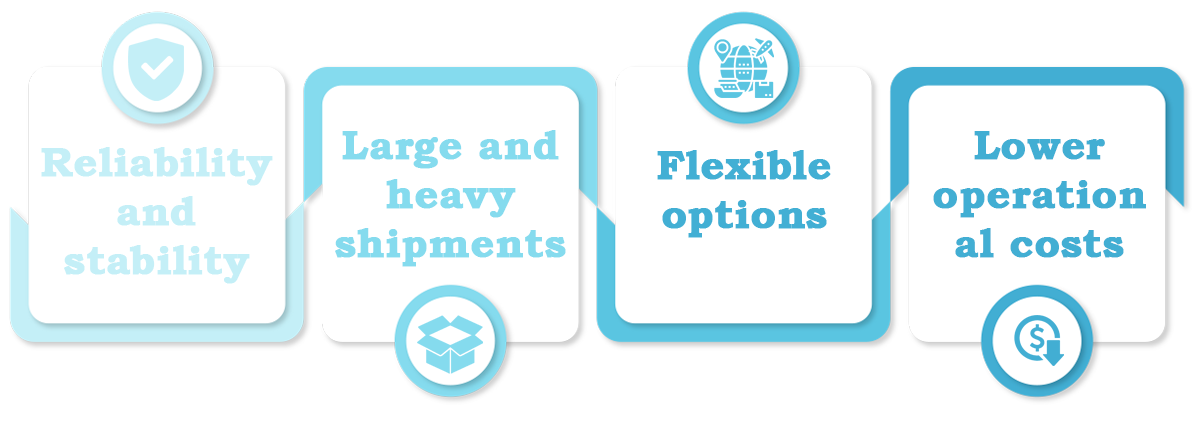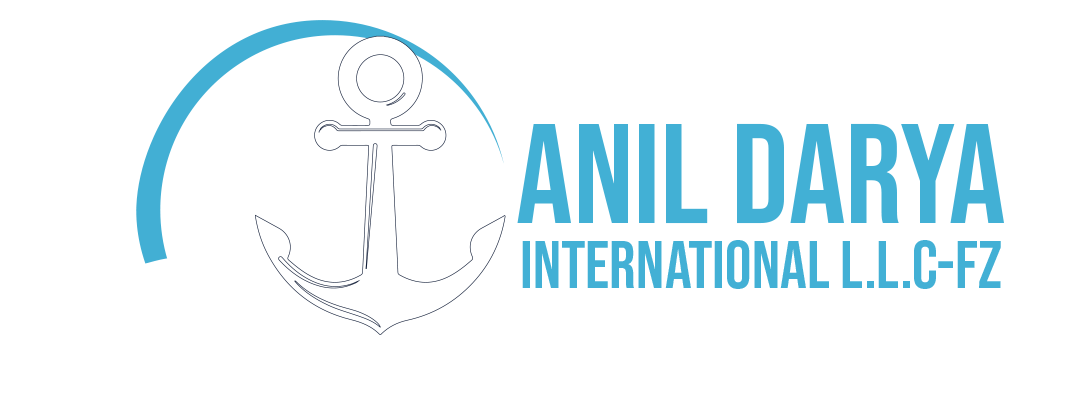

Sea Freight: The Backbone of International Trade
In today’s global economy, where speed, security, and cost efficiency are crucial, sea freight continues to hold its position as the most reliable and economical method of transporting goods. More than 80% of the world’s cargo is shipped by sea, proving its vital role in the global supply chain.
For traders, importers, exporters, and logistics companies, choosing a secure and cost-effective shipping method—especially on long routes such as China to Iran or other destinations—is a strategic decision. Specialized shipping companies play a critical role in ensuring safe, fast, and affordable deliveries.
The Importance of Sea Freight in Global Trade
Sea freight is more than just a shipping method; it is the foundation of international commerce. Its importance comes from several factors:
High capacity
Cost efficiency
Supply chain reliability
Cargo diversity
High capacity: Millions of tons of cargo can be transported in a single voyage.
Cost efficiency: Compared to air or land freight, sea shipping is far more economical for bulk cargo.
Supply chain reliability: Despite global disruptions, sea freight remains the most dependable option for large shipments.
Cargo diversity: From raw materials to consumer goods, almost any product can be transported by sea.
That is why international businesses and traders consistently rely on sea freight services as their first choice.
Why Sea Freight Is Vital for Traders and Businesses
For traders and import/export companies, choosing a transport method is not just a logistics decision—it is a strategic business choice. Sea freight stands out because:


Reliability and stability
Less affected by sudden border or regulatory changes.
Large and heavy shipments
Ideal for industrial machinery, raw materials, and oversized cargo.
Flexible options
Choose between FCL (Full Container Load) and LCL (Less than Container Load) depending on shipment size.
Lower operational costs
Reduced shipping expenses directly improve profit margins.
This is why leading businesses structure their logistics strategies around professional sea freight solutions.
Specialized Dangerous Goods Shipping by Sea
One of the biggest challenges in logistics is dangerous goods shipping. Items like chemicals, fuels, lithium batteries, compressed gases, and even certain fertilizers are classified as DG (Dangerous Goods).
Improper handling can cause financial loss, safety risks, or environmental damage. To ensure safety, the IMO (International Maritime Organization) has established strict rules under the IMDG Code.
Key requirements include:
- Standard packaging based on material type and hazard class.
- Proper labeling to inform port and vessel staff.
- Complete documentation in compliance with international laws.
- Special containers and vessels equipped for DG handling.
Experienced companies like Anil Darya Shipping manage dangerous goods shipping professionally, ensuring compliance with global standards and minimizing risks.
Step-by-Step Process of Sea Freight from China and Other Countries
When importing or exporting goods from China and other major trade partners, following the right steps in sea freight is crucial:
Container booking
Proper packaging and loading
Documentation
Shipping and delivery
1-Container booking and route planning
Select the right container type (20ft, 40ft, reefer, tanker, etc.) and optimal sea route.
2-Proper packaging and loading
Ensures safety, reduces risk of damage, and complies with DG regulations where applicable.
3-Documentation and customs clearance
Bill of Lading, invoices, and certificates must be prepared accurately to avoid delays.
4-Shipping and delivery
Cargo is transported, cleared at the destination port, and delivered to the final customer.
Professional companies streamline this process, saving both time and cost for traders.
Comparing Sea Freight with Other Shipping Methods
There are three main methods: sea, air, and land freight. Each has advantages and limitations:
Sea vs. Air Freight
Advantages:
- Much lower cost for heavy and bulky cargo.
- Ability to ship massive quantities at once.
- Global reach through international ports.
Air freight limitations:
- Intercontinental capability.
- Higher safety and reduced theft risk.
- Suitable for large and containerized shipments.
Land freight limitations:
Advantages:
- Intercontinental capability.
- Higher safety and reduced theft risk.
- Suitable for large and containerized shipments.
Land freight limitations:
- Restricted to border-connected countries.
- Complex customs across multiple territories.
- Higher risk for sensitive cargo.
Multimodal Transport
Sometimes combining sea with land or rail is the best solution. This ensures flexibility and cost optimization.
Despite being reliable, sea freight has challenges:
1-Delays in vessel schedules due to weather or port congestion.
Solution: Partner with reputable carriers and allow flexible timelines.
2-Customs and documentation issues causing cargo to be held.
Solution: Work with experienced freight forwarders who ensure compliance.
3-Unexpected extra charges such as demurrage or port handling fees.
Solution: Transparent contracts and upfront cost planning.
4-Risks in dangerous goods shipping if not managed properly.
Solution: Use certified specialists who follow IMDG Code regulations.
Why Choosing a Specialist Sea Freight Company Matters
Sea freight is not just about moving containers. It involves complex processes, regulations, and risk management. That’s why choosing an experienced partner is essential:
- Expertise in specialized and dangerous cargo
- Access to reputable global carriers
- Consultation to reduce costs and optimize logistics
- End-to-end management from origin to destination
Working with a trusted company reduces risk and ensures more profitable trade operations.
Sea Freight Services by Anil Darya Shipping
Anil Darya Shipping provides tailored solutions for international sea freight, ensuring speed, safety, and compliance.


China and global routes
Regular shipments from major Chinese ports to Iran and worldwide.
Dangerous goods shipping
Certified handling of hazardous cargo under IMDG Code standards.
Door-to-Door service
From pickup at origin to delivery at destination.
Expert consulting
Route planning, cost reduction, and risk management.
Global partnerships: Access to leading shipping lines ensures reliable and efficient service.
Frequently Asked Questions (FAQ)
Typically between 25–40 days, depending on port, carrier, and conditions.
Based on cargo type, size, weight, container type, and route. DG shipments often incur higher costs due to special handling.
Radioactive and prohibited goods, plus some restricted items without proper permits.
Yes, ideal for small and medium shipments.
Bill of Lading, commercial invoice, packing list, and relevant certificates.
Conclusion
Sea freight remains the pillar of global commerce: cost-effective, safe, and capable of handling everything from bulk cargo to hazardous goods. For businesses and traders, partnering with the right company makes all the difference.
With proven expertise in shipping from China, dangerous goods transport, and end-to-end freight solutions, Anil Darya Shipping is your trusted logistics partner.
